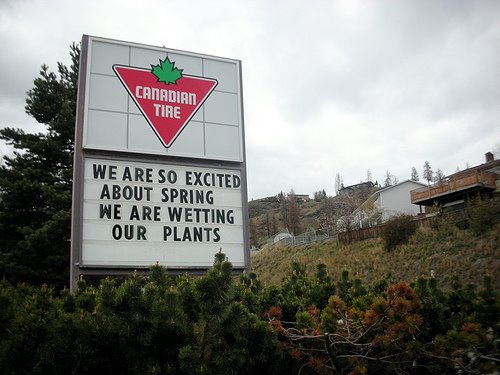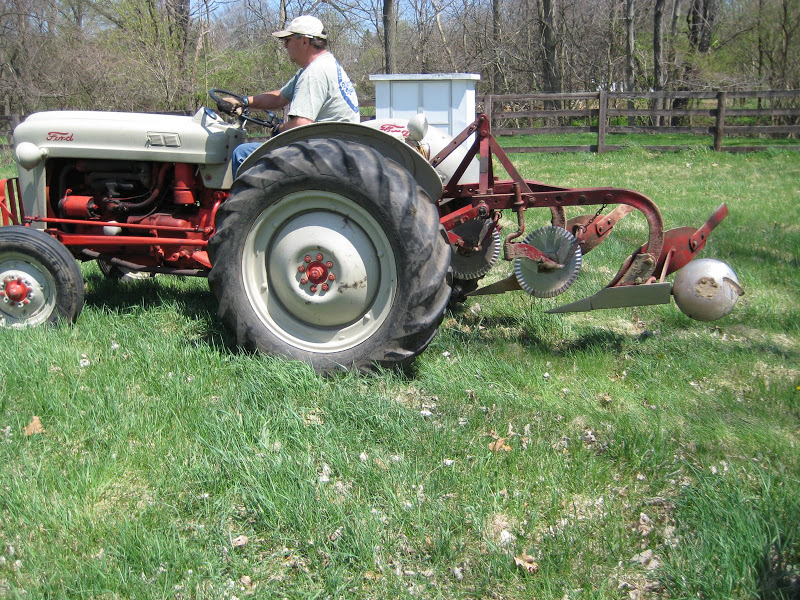
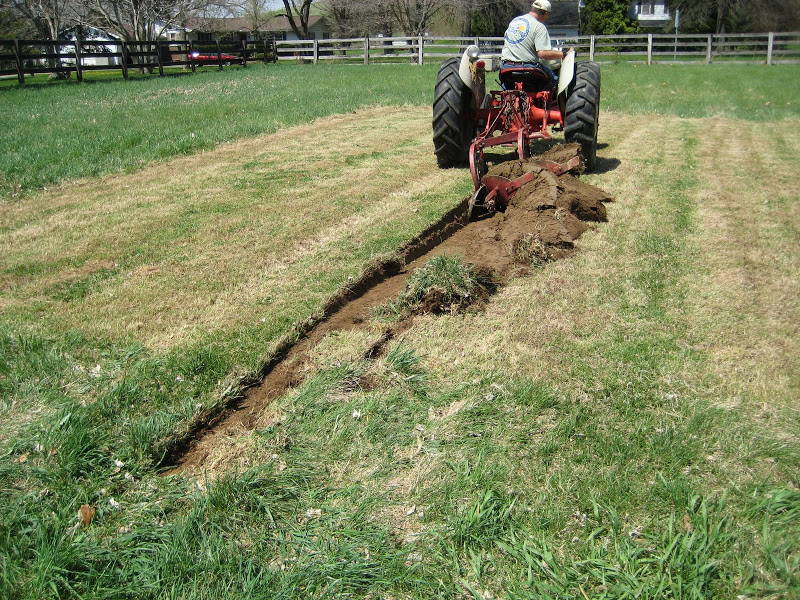
We had to wait until the ground was sufficiently thawed and dried out a bit before we could plow. There is an old time farmer named Mr. Chandler down the road from us who was kind enough to lend us his plow. Last year, Andrew and Andrew’s dad and brother helped Mr. Chandler and his son put their barn door back up that had come off it’s track. Andrew said it felt really nice, like he imagined it was in the old days, neighbors weren’t strangers and everyone helped one another out. Afterwards, Mr. Chandler’s daughter-in-law baked us pies as a thank you!
Andrew’s dad drove the plow because he is familiar with them. It’s crazy how powerful machinery is! The type of plowing we did is called moldboard plowing which is a pretty intense way to turn up the soil and clear the land. Usually for gardens as small as ours this is a one-time, never-need-to-do-again plowing process. It’s hard on the land and over time, if it is done repeatedly, can actually ruin the soil. Next year we will just till and we should be fine.
The plow took about 10-15 minutes to clear a 30′ X 40′ space! That was the easy part. We then had to rototill the whole plot (it would have been ideal to disc the field at this point, but we didn’t have one of those). Oh, and the raking…ugh…talk about back breaking work.
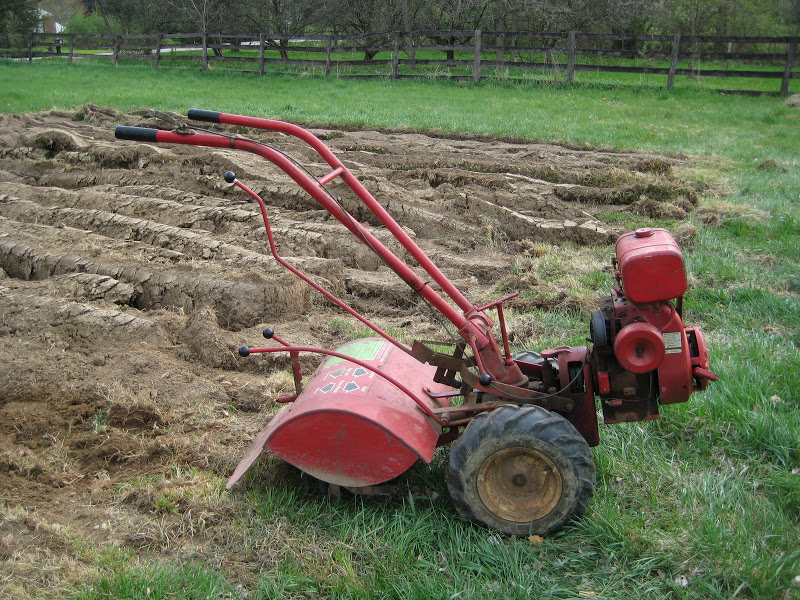
The weeding for the first year is going to be absolutely horrific, but we just need to stay on it!
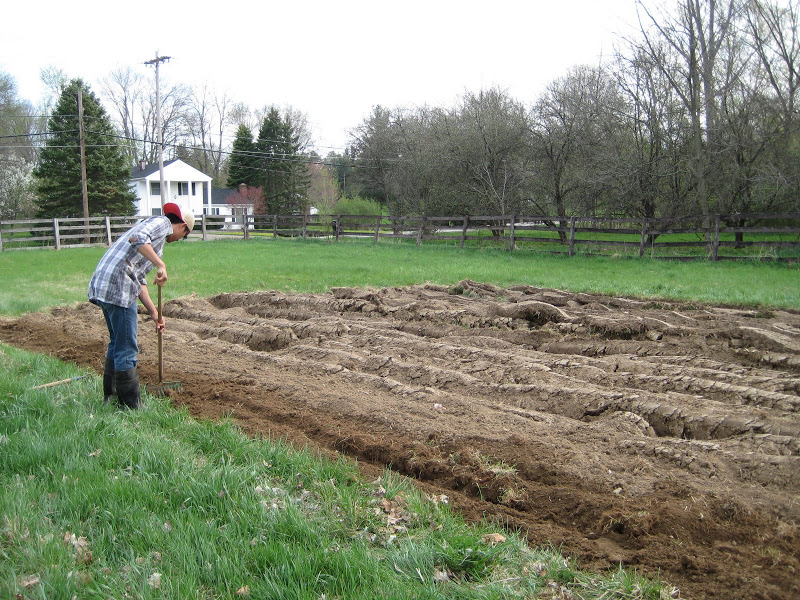
Next step: fencing.
–c.


We had to wait until the ground was sufficiently thawed and dried out a bit before we could plow. There is an old time farmer named Mr. Chandler down the road from us who was kind enough to lend us his plow. Last year, Andrew and Andrew’s dad and brother helped Mr. Chandler and his son put their barn door back up that had come off it’s track. Andrew said it felt really nice, like he imagined it was in the old days, neighbors weren’t strangers and everyone helped one another out. Afterwards, Mr. Chandler’s daughter-in-law baked us pies as a thank you!
Andrew’s dad drove the plow because he is familiar with them. It’s crazy how powerful machinery is! The type of plowing we did is called moldboard plowing which is a pretty intense way to turn up the soil and clear the land. Usually for gardens as small as ours this is a one-time, never-need-to-do-again plowing process. It’s hard on the land and over time, if it is done repeatedly, can actually ruin the soil. Next year we will just till and we should be fine.
The plow took about 10-15 minutes to clear a 30′ X 40′ space! That was the easy part. We then had to rototill the whole plot (it would have been ideal to disc the field at this point, but we didn’t have one of those). Oh, and the raking…ugh…talk about back breaking work.

The weeding for the first year is going to be absolutely horrific, but we just need to stay on it!

Next step: fencing.
–c.
Last week I wrote about the new blog that I have been contributing to, wiseUP and the “10 to Change” challenge. Today, my post is up about my “10 to Change” idea. Here is the link to the entire blog where you can read other people’s “10 to Change” ideas as well as other inspirational posts. And here is a link directly to my post.
Enjoy!
–c.
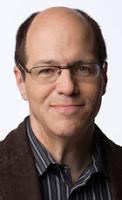
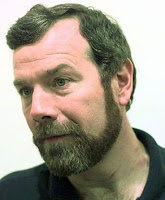 I know that people get a song stuck in their head all the time, but have you ever gotten a name stuck in your head? I’ve had the name “Jim Zarroli” (NPR reporter) repeating in my head over and over! And Andrew currently has “P.J. Carlesimo” (NBA basketball coach and broadcaster) on repeat. It’s just one of those things.
I know that people get a song stuck in their head all the time, but have you ever gotten a name stuck in your head? I’ve had the name “Jim Zarroli” (NPR reporter) repeating in my head over and over! And Andrew currently has “P.J. Carlesimo” (NBA basketball coach and broadcaster) on repeat. It’s just one of those things.
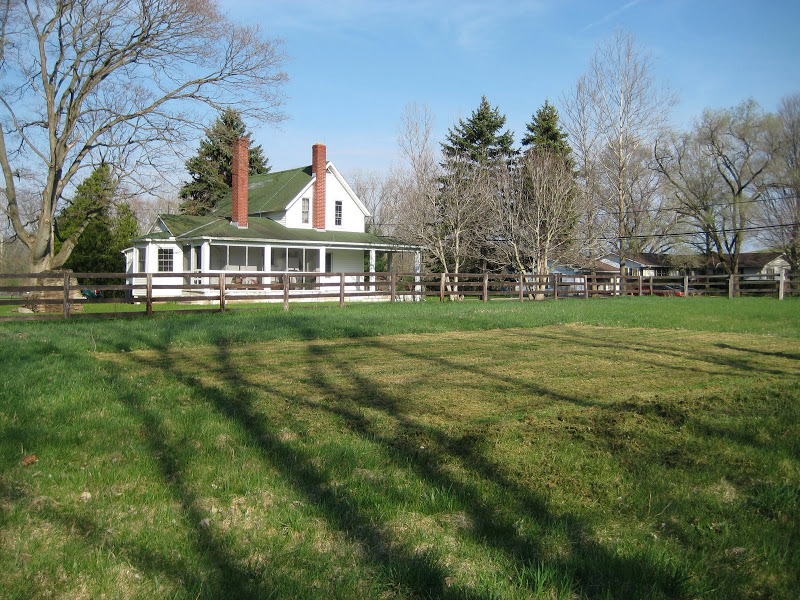
So far, the most labor intensive process of the garden has been preparing the garden plot. Between mowing, plowing, tilling, raking and weeding, the majority of our time and energy thus far has been spent getting the ground ready for planting.
We’re fortunate to have a big fenced in pasture right next to our house that has been nothing but grass since the dinosaurs, as Andrew likes to say. Originally it was a field for horses, but there hasn’t been any there for nearly 20 years. It gets full sun all day (except for one area that gets shade towards the end of the day from a huge tree in our backyard) and seems the perfect spot for the garden.
We started the plot by measuring out the plot then mowing it.
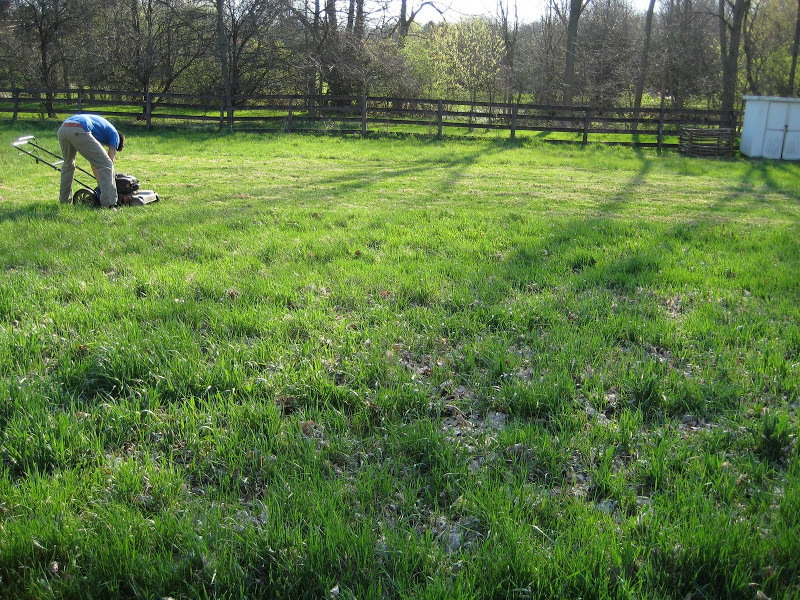
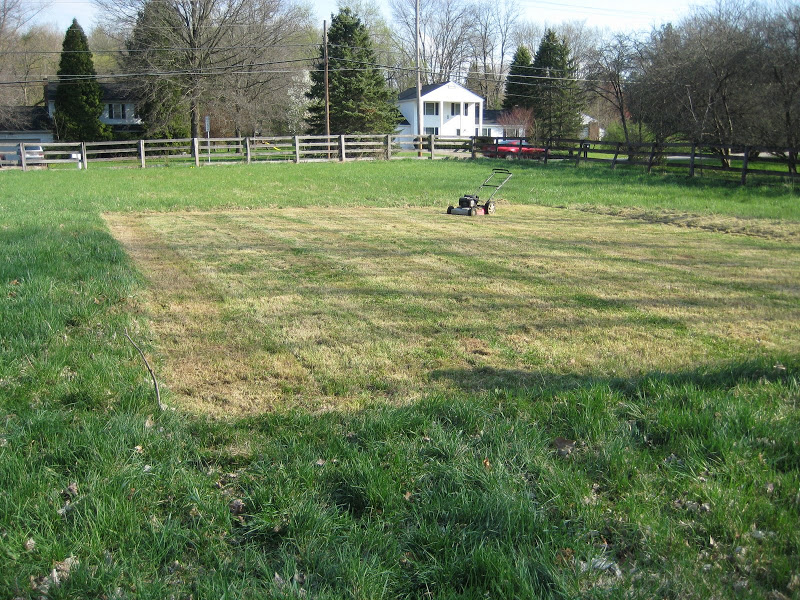
Here is the plot after mowing, next step: plowing.
–c.

So far, the most labor intensive process of the garden has been preparing the garden plot. Between mowing, plowing, tilling, raking and weeding, the majority of our time and energy thus far has been spent getting the ground ready for planting.
We’re fortunate to have a big fenced in pasture right next to our house that has been nothing but grass since the dinosaurs, as Andrew likes to say. Originally it was a field for horses, but there hasn’t been any there for nearly 20 years. It gets full sun all day (except for one area that gets shade towards the end of the day from a huge tree in our backyard) and seems the perfect spot for the garden.
We started the plot by measuring out the plot then mowing it.


Here is the plot after mowing, next step: plowing.
–c.
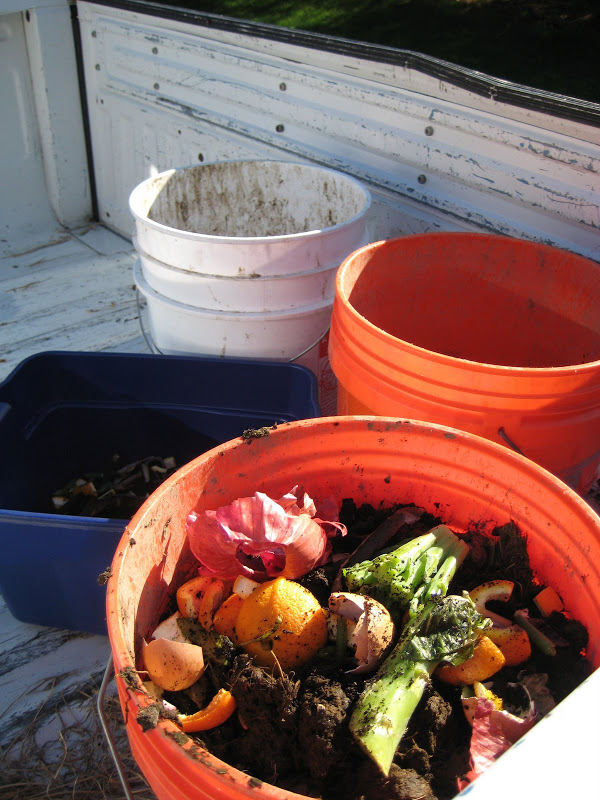
From the start, there was no question that we were going to have an organic garden. And one of the most crucial elements of an organic garden is organic compost. My parents have composted kitchen scraps as long as I can remember so the notion of saving kitchen scraps was nothing new to me. But once we started reading up on the correct way to make compost, that’s when our heads started to spin.
Basically, there are a million ways it can be done. On one hand you have people who are super meticulous about the ratios of “greens” to “browns” and how often to turn it, and swear that you have to do this and have to do that. And on the other hand you have people like my parents who throw things in a pile at the edge of the woods and it seems to turn out fine regardless of the limited time they spend caring for it.
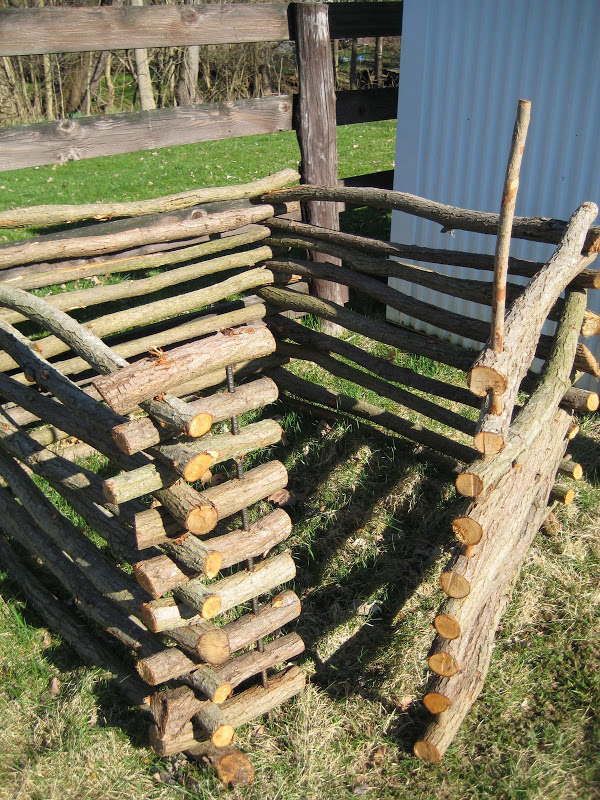
I think we are on the right track. Andrew built this amazing and beautiful composting bin out of old willow trunks. It seems strange that something so nice looking will be filled with decomposing stuff. I don’t think we will able to use any of the compost this season though. We got such a late start and like most good things it takes time to build up. Next growing season we will be ready!
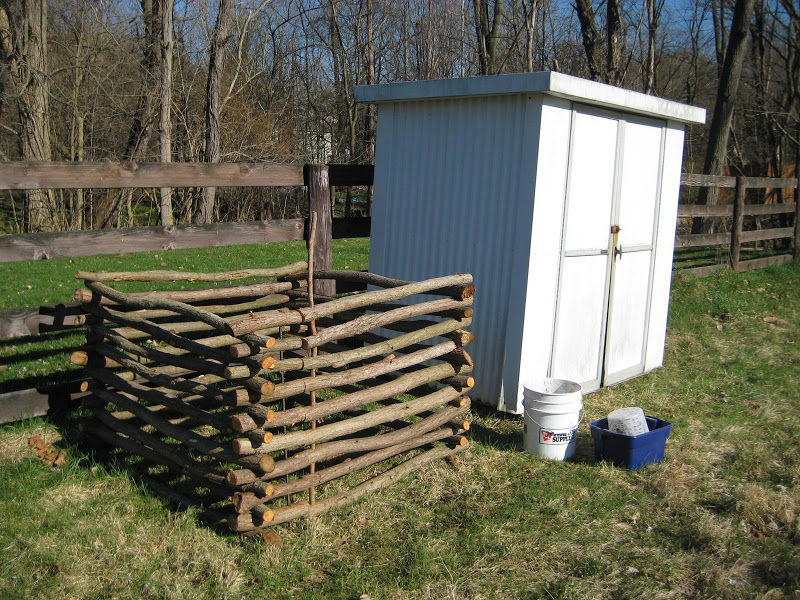
–c.

From the start, there was no question that we were going to have an organic garden. And one of the most crucial elements of an organic garden is organic compost. My parents have composted kitchen scraps as long as I can remember so the notion of saving kitchen scraps was nothing new to me. But once we started reading up on the correct way to make compost, that’s when our heads started to spin.
Basically, there are a million ways it can be done. On one hand you have people who are super meticulous about the ratios of “greens” to “browns” and how often to turn it, and swear that you have to do this and have to do that. And on the other hand you have people like my parents who throw things in a pile at the edge of the woods and it seems to turn out fine regardless of the limited time they spend caring for it.

I think we are on the right track. Andrew built this amazing and beautiful composting bin out of old willow trunks. It seems strange that something so nice looking will be filled with decomposing stuff. I don’t think we will able to use any of the compost this season though. We got such a late start and like most good things it takes time to build up. Next growing season we will be ready!

–c.
